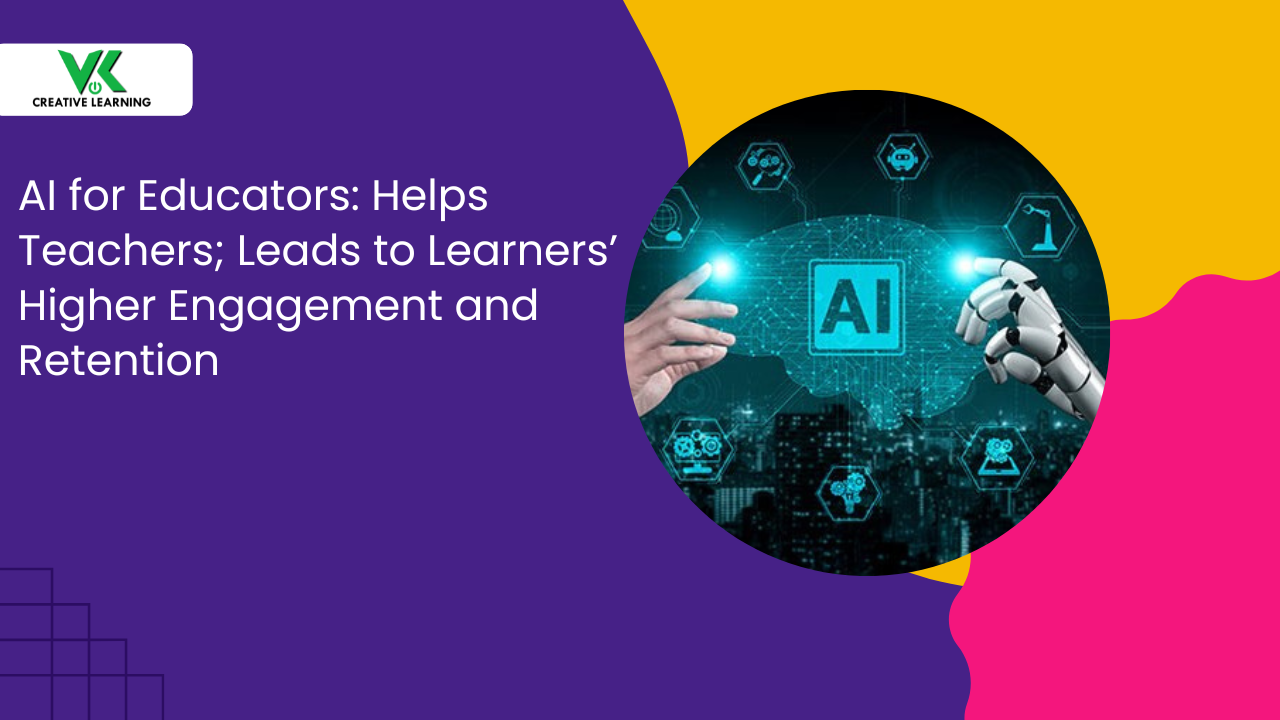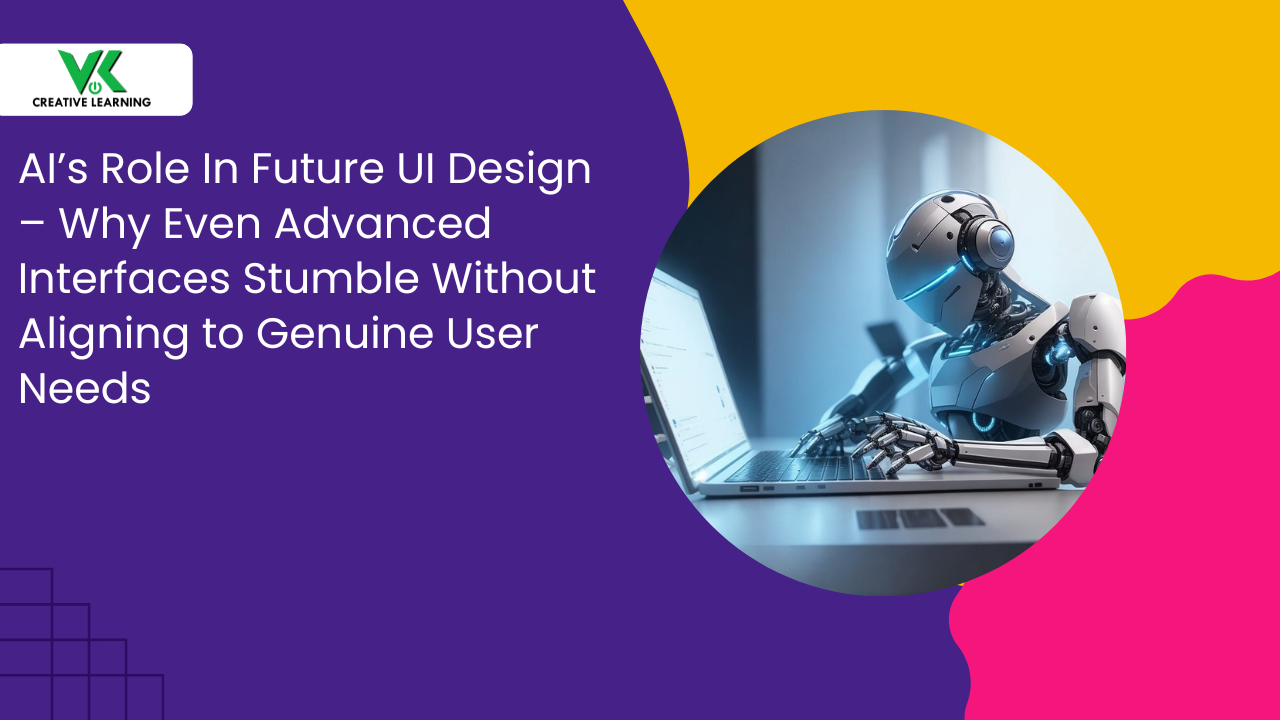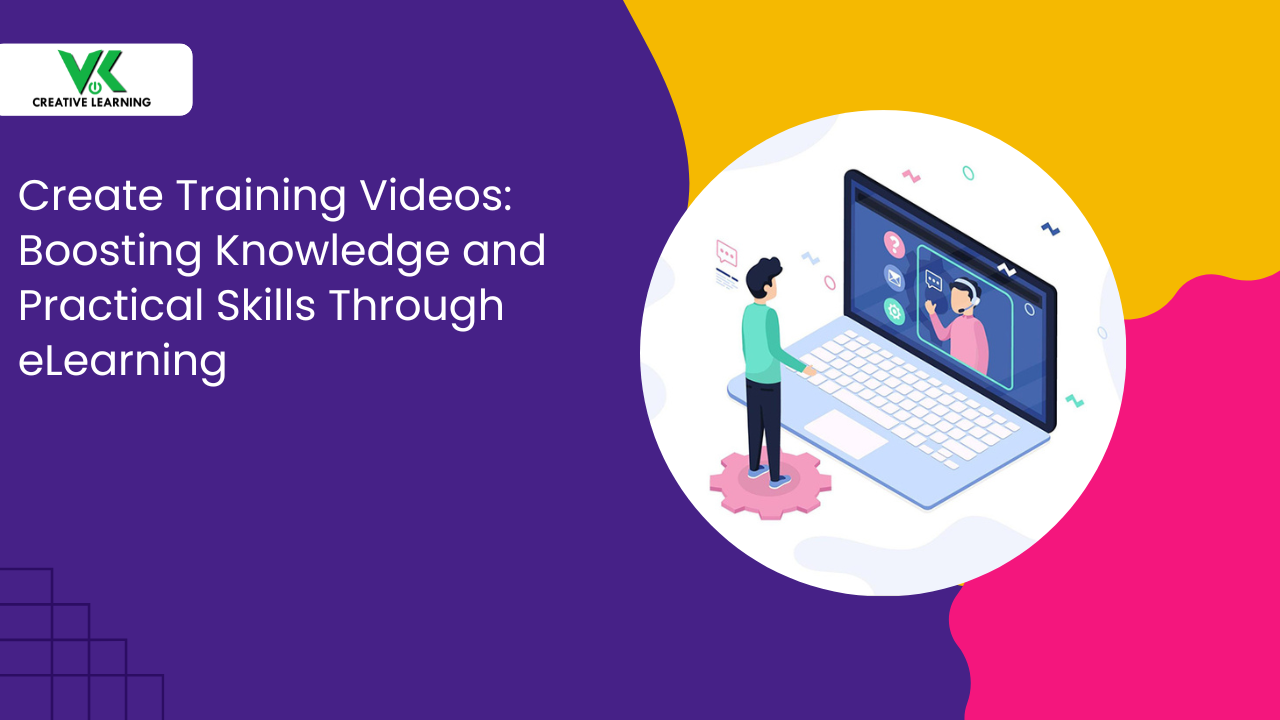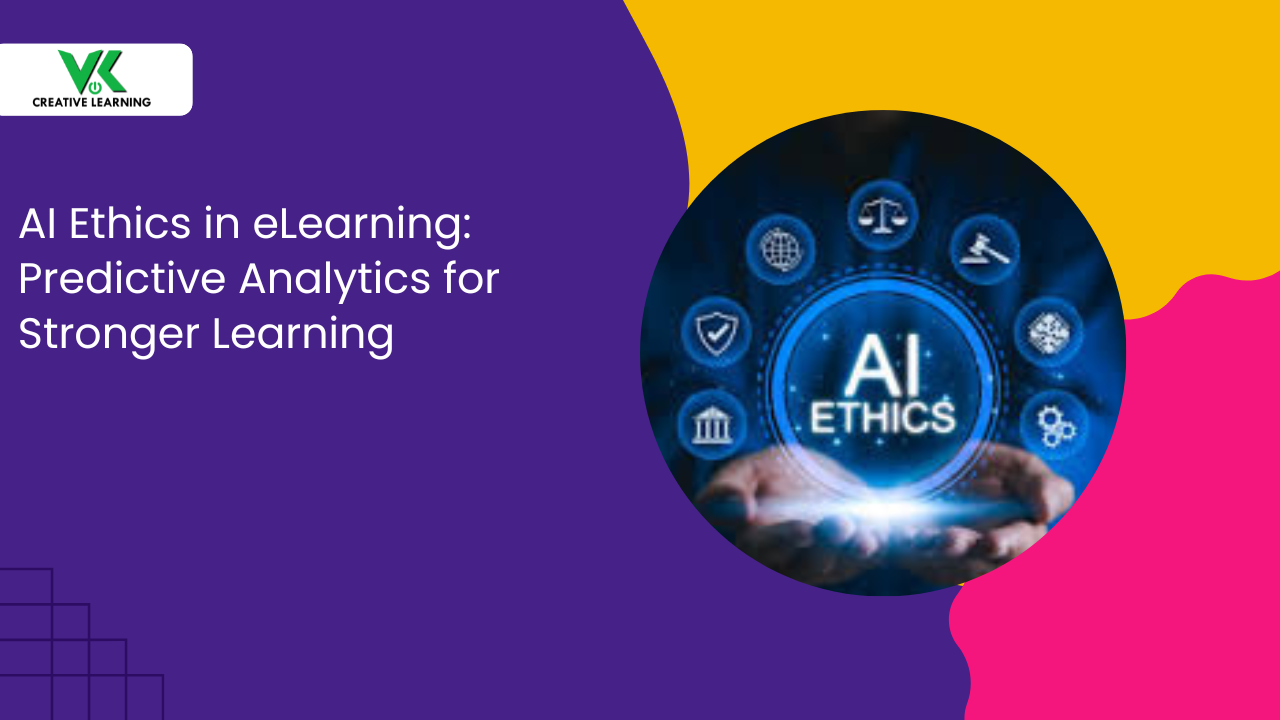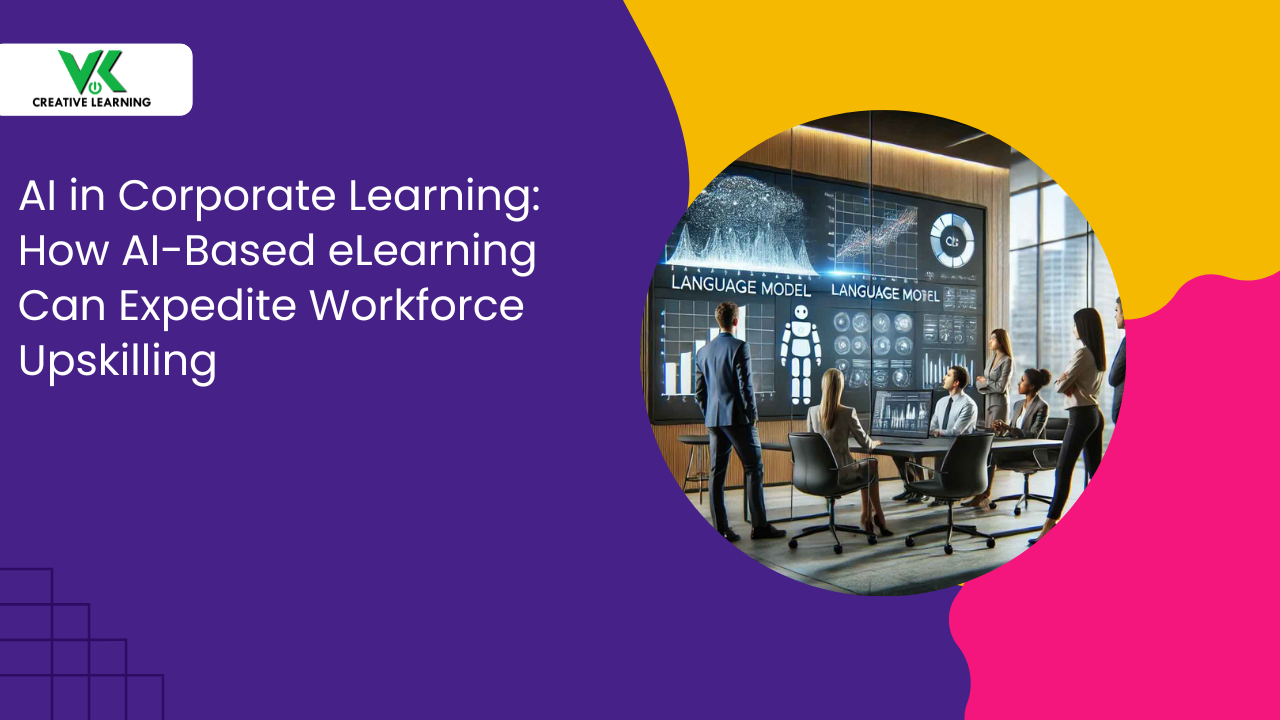Traditional Learning With E-learning: Why Blending Both Is Necessary?
July 12, 2025
Education has changed incredibly; once, students sat still in classrooms, passively listening to lectures. It's like teaching an idea and repeating the same idea aloud again and again.
But with time, schools and institutions are using engaging tools like videos (e-learning 3D animations). These are based on concepts and are short subject clips. Further included in the list are interactive slides in the form of click-to-learn formats.
Additionally, there are mobile apps with lessons explained with examples and online quizzes. Thus, students can check the lesson when it is possible, like during lunch breaks.
Though these changes have come about, traditional learning involving face-to-face interactions holds its own charm. They also include live help wherein a teacher solves doubts, Also, book reading and lively peer discussions are involved to build stronger bonds among students.
Moreover, the fusion of both online learning and traditional learning styles serves distinct purposes.
Interestingly, traditional learning brings in disciplined learning in the form of a structured mindset and on-time work habits. Importantly, distractions can be combated through a routine that is established through real-time teacher guidance.
Traditional learning also entails instant feedback wherein the teacher points out errors of the students and helps them.
When online learning and traditional learning are blended, it becomes possible to provide step-by-step instructions on a topic. This also helps to solve one problem at a time.
Also, online learning favors flexibility in terms of studying anytime, access, -- study after sports. Students can go through lessons (on-the-go learning and revisions).
Also, e-learning platforms involve visual content (3D explanatory animated lessons) along with infographics (colorful image facts). This helps to speed up progress (learn at a fast or slow pace), skip or repeat, or revise by clicking on topics.
1. Overview: What Is Traditional Learning and E-learning?
- Meaning and Features of Traditional Education
- Meaning and Characteristics of Online Learning
- Detailed Analysis: Understanding What Distinguishes Both -- Online Learning and Traditional Learning
- Eight Reasons Why Blending Online Learning and Traditional Learning Is Necessary
- Helps Students Learn at Their Own Pace and Rhythm
- Supports Different Types of Learning Styles and Needs
- Improves Student Participation and Classroom Interaction
Overview: What Is Traditional Learning and E-learning?
Meaning and Features of Traditional Education
Traditional education happens within four-walled classrooms with chalkboards, timetables, and textbooks. The use of blackboards, worksheets, and benches shapes the knowledge-seeking process.
In other words, students can sit at desks -- carefully listening in, not influenced by distractions, and soaking in the information. In the classroom, teachers explain, evaluate, and fix learning problems. This turns out to be a long-standing formula when it comes to conventional teaching. This has been handed down over centuries and remains part of educational traditions.
Also, it entails notebook use to take down notes along with lively dialogues for students. Also, knowledge-gainers are asked to perform team-crafted projects (e.g., group posters, oral presentations, science charts). These measures become essential aspects of everyday classroom teachings.
Also, schedules are fixed -- classes happen on time and close on cue. Additionally, teachers keep a track of attendance, scores, and conduct of the students (chalked down behavior). Learners work elbow-to-elbow and hence, team spirit brews. They develop mutual respect for each other, and classroom bonding happens.
Meaning and Characteristics of Online Learning
E-learning, when compared to traditional learning, makes use of the internet. Hence, it is more like a virtual platform having different types of digital features/tools. It allows students to watch 3D videos and lesson lectures.
Thus, students get the flexibility to attend classes via pocket devices. They can even learn using touchable screen devices (smartphones), or portable devices like laptops. The best part: teachers may conduct classes from miles away. Maybe, the instructors conducting the lectures can be in a different country or city.
Therefore, students have global access, so learning from afar and studying across borders becomes possible. Also, it makes traditional education easy, as when coupled with e-learning, the lessons are self-paced.
In other words, it offers flexible learning for students -- anytime lessons become possible. Also, importantly, there is no such strict schedule for learning. Plus, there is no rush, and students can absorb knowledge at their own speed.
Also, online learning and traditional learning are combined; e-learning also adds quirky elements to the information-gathering process. That is, e-learning provides 2D and 3D animated visuals, character-based animations, and 3D colorful explainer videos.
The introduction of visual explanations with examples is a perfect match for visual learners in all ways. This kind of visual learning would suit picture-loving thinkers, diagram-based learners as they soak up information through visuals. This would also be helpful for independent learners or study-alone types who prefer to understand information on their own.
Additionally, game-based elements are introduced so that interactive elements come into play. Additionally, features like point-based earning quizzes and games with drag-and-drop tasks are present.
Furthermore, audio lessons ( that is: voice lessons, spoken chapters, guided narration) are also included. Interestingly, if there are complex chapters, they are made super easy for learners. This is achieved through chunking out big lessons into small modules (10-minute lessons) with easy stories, elaborations. and examples.
Also, the virtual platforms are so designed that they usually give instant feedback to learners. That is, students get quick responses: spot-on hints, automatic corrective responses. This helps students to fix errors or bring improvements where they are going wrong. Thus, there is no unnecessary waiting period of a few days or weeks.
Detailed Analysis: Understanding What Distinguishes Both -- Online Learning and Traditional Learning
Unlike e-learning, traditional learning can find stumbling blocks as it has a brick-and-mortar setup. Also, it is based on rigid rules like using handout printed notes -- time-consuming exercises, and strict timings. E-learning, however, uses the internet (web-powered study: digital classrooms); hence, students can learn from anyplace where Wi-Fi is available.
In other words, traditional learning highly values rule-bound routines such as time-bound tasks and classroom etiquette.
This leaves hardly any room so that students can analyse problems as when they can. This means they can learn at their own pace – no hurry and pressure. On the other hand, e-learning renders the required convenience (anytime resource access, pause-and-play learning) to learners.
Eight Reasons Why Blending Online Learning and Traditional Learning Is Necessary
Helps Students Learn at Their Own Pace and Rhythm
Blended learning (through the mixture of traditional and e-learning) helps students to absorb lessons swiftly. Also, the knowledge absorption is a self-paced (slow-and-steady) process.
This benefits students as some take longer to learn while others can breeze through concepts. Importantly, by mixing traditional education classes with animated video and sound lessons, learners can grasp concepts quickly.
In fact, e-learning consists of the presence of animated video lessons and recorded lectures. This allows the students to watch them again and again until they have understood the topics.
This way, they feel contended as lessons become easy to understand and they face less stress. Consequently, they end up brimming with confidence during classroom sessions.
The presence of video assistance also allows students to pause or rewind digital modules. The learners can also ask questions to their professors later.
The playable-learning lessons videos also play a vital role in improving their focus. Additionally, since the videos are watched repeatedly by individuals, they are able to retain the concepts for a longer time. After checking the animated explanations, they can clarify tricky bits during the class with their teachers.
Supports Different Types of Learning Styles and Needs
It is very well known that every student has a preferred way to learn better that makes grasping information smooth for them. That is, some may like to read, others may watch visuals of the concepts. Besides, some may prefer listening to audio explanations.
This is why mixed-mode teaching involving traditional and online learning may work. In other words, it lowers the use of heavy fat books or lengthy lecture videos.
Instead, it offers microlearning-based 5 to 10-minute videos with small text information and infographics. Additionally, e-learning also offers guidance through peers through collaborative platforms.
This form of approach supports the learn-through-seeing audience, the listen-and-learn learners, and book readers. E-learning also encompasses elements (learning-support tech). these include subtitles (read-while-watching videos) and audiobooks (listening to the text).
These measures aid students with learning difficulties, too, as they can choose the medium of learning suitable to them. E-learning platform also allows teachers to understand the content fit for different learners.
Then, they can come out with suggestions that would suit learners of different types. Through these forms of modes of learning in the virtual platform, all kinds of learners get an equal shot at understanding the information in a better way.
Improves Student Participation and Classroom Interaction
In blended classrooms (traditional education with digital spaces), learners can be part of the lessons. This happens as they are made to participate in simulated tasks for understanding various concepts.
For example, a digital quiz (online-based test) can kindle a classroom discussion among learners after it’s over. Such methodology breathes life into the learning cycle. Additionally, it nudges students to lean in (interactive videos, collaborative tasks, simulated challenges).
Importantly, shy learners change as they start speaking more during simulated-based activities (on-screen tasks). Later, these learners can carry the gained confidence when it comes to group chats.
Thus, the amalgamation of traditional learning with online aids in building trust among learners. They also end up gaining concept-based real examples as they do activities. Thus, the digital platform helps learners to connect theoretical concepts to the actual world.
Conclusion
Blending classroom lessons with e-learning-based interactive videos provides comprehensive learning. In fact, it brings a well-balanced structure to the lesson planning, adding custom-fit routines.
Thus, dull lessons are turned into something fun for learners. When schools mix printed worksheets with online animations, students grasp concepts. These elements, such as 3D explanatory videos, ensure that they also enjoy learning various topics.
Universities can ensure students don't quit, creating smarter-thinking individuals by opting for this approach. The magic lies in crafting content that fits every learner-friendly timing, not just the top few.
Smart schools often work with expert content creators (lesson planners, animation makers) to build memorable and emotion-rich learning. If done right, this method boosts test scores without any stress.
If you are looking to bring the best out of traditional learning and e-learning, you can contact VK Creative Learning. They are proven players when it comes to custom e-learning solutions -- creating digital content as per expectations. They have vast experience in even while mixing traditional content with e-learning platforms. They can also convert traditional PDF/text formats into digital formats.
